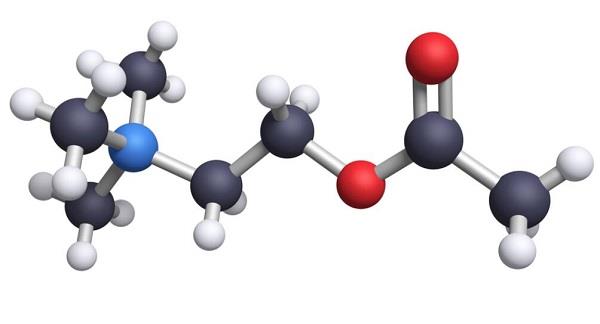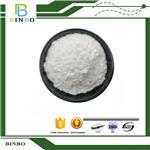Biological functions and synthesis of Acetylcholine
Jun 24,2022
Acetylcholine functions as a neurotransmitter in the central, somatic, and autonomic nervous systems. It is primarily a neurotransmitter of the parasympathetic nervous system and the preganglionic neurons of the sympathetic nervous system. Acetylcholine is also released in the neuromuscular junction to activate muscles. Its chemical structure is an ester of acetic acid and choline.

Discovery
ArthurEwins first extractedacetylcholine fromthe ergot fungus.Henry Dale studied the effects of acetylcholine in peripheral nervous systems and discovered that it lowered the bloodpressure of cats.OttoLoewi notedthat the vagus nerve secretes a substance that stimulates the heartmuscle and suspected that itwas acetylcholine.Loewi andNavratil showed that the effects of the substance and synthetic acetylcholine were similarly lost when they were treated by acetylcholine-degrading enzymes.Dale and Loewi were awarded the Nobel Prize in Physiology or Medicine in1936“for theirdiscoveries relatingto(the)chemical transmission ofnerveimpulses.”Avariety of animalsuse acetylcholine as a neurotransmitter.
Properties
Mr 146.21. Acetylcholine is soluble in water (~0.14mg/mL). Acetylcholine does not cross the bloodbrain barrier because of its highly polar structure. Synthesis and release Gene, mRNA, and precursor Acetylcholine is synthesized by choline acetyltransferase from choline and acetyl-CoA. Tissue distribution Nervous system of various organs. Plasma concentration Rat, 3.6μM; humans, 3.2μM. In humans, acetylcholine is rapidly hydrolyzed into acetic acid and choline by acetylcholinesterase in the tissue and by pseudocholinesterase in the blood.
Regulation of synthesis and release
Acetylcholine synthesis is supported by presynaptic choline transport. Neurons cannot synthesize choline. Choline is derived from the diet and delivered through the blood stream. However, free choline administration does not increase acetylcholine synthesis or release. Acetylcholine released from the synapses is hydrolyzed by acetylcholinesterase into choline and acetic acid. Half the choline derived from acetylcholine hydrolysis is recovered by the choline transporter.
Biological functions
Target cells/tissues and functions
Acetylcholine has effects on neuronal plasticity, arousal, reward, learning, and memory in the brain.Acetylcholine is a neurotransmitter from the central nervous system to the autonomic ganglia in the sympathetic and the parasympathetic nervous systems. Acetylcholine is also released in the neuromuscular junction to activate skeletal muscles in the somatic nervous system. The skeletal muscles express nicotinic receptors on the cell membrane. When acetylcholine binds to the receptor, sodium ions flow into the muscle cells and induce muscle contraction. More than a third of the cells in the C. elegans nervous system release acetylcholine, which is the major excitatory neurotransmitter at neuromuscular junctions.
Phenotype of gene-modified animals
The knockout of the muscarinic acetylcholine receptors Chrm1 and Chrm3 in mice showed that these receptors are essential for rapid eye movement (REM) sleep.Dysregulated hippocampal acetylcholine neurotransmission and impaired cognition were observed in M2, M4, and M2/M4 muscarinic receptor knockout mice.A null mutation of the β2 nicotinic acetylcholine receptor subunit attenuates nicotine withdrawal-induced anhedonia in mice.Procedural learning was delayed in α7- nicotinic acetylcholine receptor knockout mice.
Clinical implications
Myasthenia gravis is characterized by muscle weakness and fatigue, caused by inappropriately produced antibodies against nicotinic acetylcholine receptors. Drugs such as neostigmine and physostigmine that inhibit acetylcholine esterase are used to treat this disorder. Nicotine in tobacco binds and activate nicotinic acetylcholine receptors; this is addictive. Atropine, a nonselective antagonist for muscarinic acetylcholine receptors, is poisonous but also used to treat heart conditions and eye problems. Inhibitors of acetylcholine esterase such as sarin and VX nerve gas are used as nerve agents. Organophosphates and carbamates are used as pesticides. Botulinum toxin suppresses the release of acetylcholine and causes paralysis.
- Related articles
- Related Qustion
- The synthesis process of Acetylcholine Jul 25, 2024
Acetylcholine (ACh) is a small molecule neurotransmitter best known for its role at the neuromuscular junction, the synapse between a motor neuron and a muscle fibre.
- What is Acetylcholine? Oct 19, 2021
Acetylcholine is the endogenous neurotransmitter at cholinergic synapses and neuromuscular junctions in the central and peripheral nervous systems. Acetylcholine is involved in control of behavioral state, posture, cognition and memory, and
Titanium dioxide is an odorless white powder. Tasteless. pH 7.5. Occurs in three crystalline forms. (NTP, 1992). Chemicals Titanium dioxide is a titanium oxide with the formula TiO2.....
Jun 24,2022Inorganic chemistryNO is a 30Da free radical that is a colorless gas with a melting point of -163.6°C. NO has one unpaired electron and is paramagnetic.....
Jun 24,2022Inorganic chemistryAcetylcholine
51-84-3You may like
Acetylcholine manufacturers
- Acetylcholine
-

- $0.00 / 25kg
- 2025-12-01
- CAS:51-84-3
- Min. Order: 1kg
- Purity: 99%
- Supply Ability: 10000KGS
- (2-acetoxyethyl)trimethylammonium USP/EP/BP
-

- $1.10 / 1g
- 2025-11-18
- CAS:51-84-3
- Min. Order: 1g
- Purity: 99.9%
- Supply Ability: 100 Tons min
- Acetylcholine
-

- $0.00 / 1kg
- 2025-06-13
- CAS:51-84-3
- Min. Order: 1kg
- Purity: 99.8%
- Supply Ability: 1000 kg






